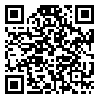Volume 7, Issue 3 (September 2025)
IEEPJ 2025, 7(3): 0-0 |
Back to browse issues page
Download citation:
BibTeX | RIS | EndNote | Medlars | ProCite | Reference Manager | RefWorks
Send citation to:



BibTeX | RIS | EndNote | Medlars | ProCite | Reference Manager | RefWorks
Send citation to:
Karimi H, Minaei A, Moghadamzade A. (2025). The Relationship between Big Five Personality Traits and Response Styles: Analysis of Gender Differences Using Multidimensional IRT Models. IEEPJ. 7(3),
URL: http://ieepj.hormozgan.ac.ir/article-1-974-en.html
URL: http://ieepj.hormozgan.ac.ir/article-1-974-en.html
1- Department of Psychology, Sav.C., Islamic Azad University, Saveh, Iran
2- Associate Professor, Department of Educational Measurement, Faculty of Psychology and Education, Allame Tabataba'i, Tehran, Iran ,asgharminaeie@gmail.com
3- Associate Professor, Department of Educational Measurement, Faculty of Psychology and Education, University of Tehran, Tehran, Iran
2- Associate Professor, Department of Educational Measurement, Faculty of Psychology and Education, Allame Tabataba'i, Tehran, Iran ,
3- Associate Professor, Department of Educational Measurement, Faculty of Psychology and Education, University of Tehran, Tehran, Iran
Abstract: (763 Views)
Objective: This study aimed to investigate the relationship between the Big Five personality traits and response styles, and to examine the role of gender in these associations using multidimensional Item Response Theory (IRT) models.
Methods: Data were collected from 17,994 participants (9,876 women and 8,118 men) who voluntarily completed the 60-item NEO personality questionnaire via an online platform. Three multidimensional IRT models were applied: the Generalized Partial Credit Model (GPCM), the Generalized Random Threshold Model (GRTM), and the Random Threshold Model with E and B design matrices. In the E-matrix coding, response styles were operationalized as follows: extreme response style (ERS) through the use of scale endpoints, midpoint response style (MRS) through the use of central options, and acquiescent response style (ARS) through the use of agreement-oriented options. Model fit comparisons indicated that the GPCM provided the best fit to the data (AIC = 2,775,512; BIC = 2,778,202; CAIC = 2,778,547).
Results: Correlation analyses showed the strongest associations between Extraversion and ARS (r = 0.597), and between Neuroticism and ERS (r = 0.255). Regression analyses identified Extraversion as the strongest predictor of ARS (β = 0.376). The model explained 38.5% of the variance in ARS, 17.5% in ERS, and 0.5% in MRS. Gender analyses indicated that women were less likely than men to use ERS (β = -0.190) but more likely to use MRS (β = 0.020). Interaction effects suggested that Neuroticism and Openness had stronger impacts on ERS among men than women.
Conclusions: These findings underscore the importance of considering both personality traits and gender in understanding response styles, with implications for personality assessment and test interpretation.
Methods: Data were collected from 17,994 participants (9,876 women and 8,118 men) who voluntarily completed the 60-item NEO personality questionnaire via an online platform. Three multidimensional IRT models were applied: the Generalized Partial Credit Model (GPCM), the Generalized Random Threshold Model (GRTM), and the Random Threshold Model with E and B design matrices. In the E-matrix coding, response styles were operationalized as follows: extreme response style (ERS) through the use of scale endpoints, midpoint response style (MRS) through the use of central options, and acquiescent response style (ARS) through the use of agreement-oriented options. Model fit comparisons indicated that the GPCM provided the best fit to the data (AIC = 2,775,512; BIC = 2,778,202; CAIC = 2,778,547).
Results: Correlation analyses showed the strongest associations between Extraversion and ARS (r = 0.597), and between Neuroticism and ERS (r = 0.255). Regression analyses identified Extraversion as the strongest predictor of ARS (β = 0.376). The model explained 38.5% of the variance in ARS, 17.5% in ERS, and 0.5% in MRS. Gender analyses indicated that women were less likely than men to use ERS (β = -0.190) but more likely to use MRS (β = 0.020). Interaction effects suggested that Neuroticism and Openness had stronger impacts on ERS among men than women.
Conclusions: These findings underscore the importance of considering both personality traits and gender in understanding response styles, with implications for personality assessment and test interpretation.
Type of Study: Original |
Subject:
Educational Psychology
Received: 2025/02/2 | Accepted: 2025/05/14 | Published: 2025/09/1
Received: 2025/02/2 | Accepted: 2025/05/14 | Published: 2025/09/1
Send email to the article author
| Rights and permissions | |
 |
This work is licensed under a Creative Commons Attribution-NonCommercial 4.0 International License. |






